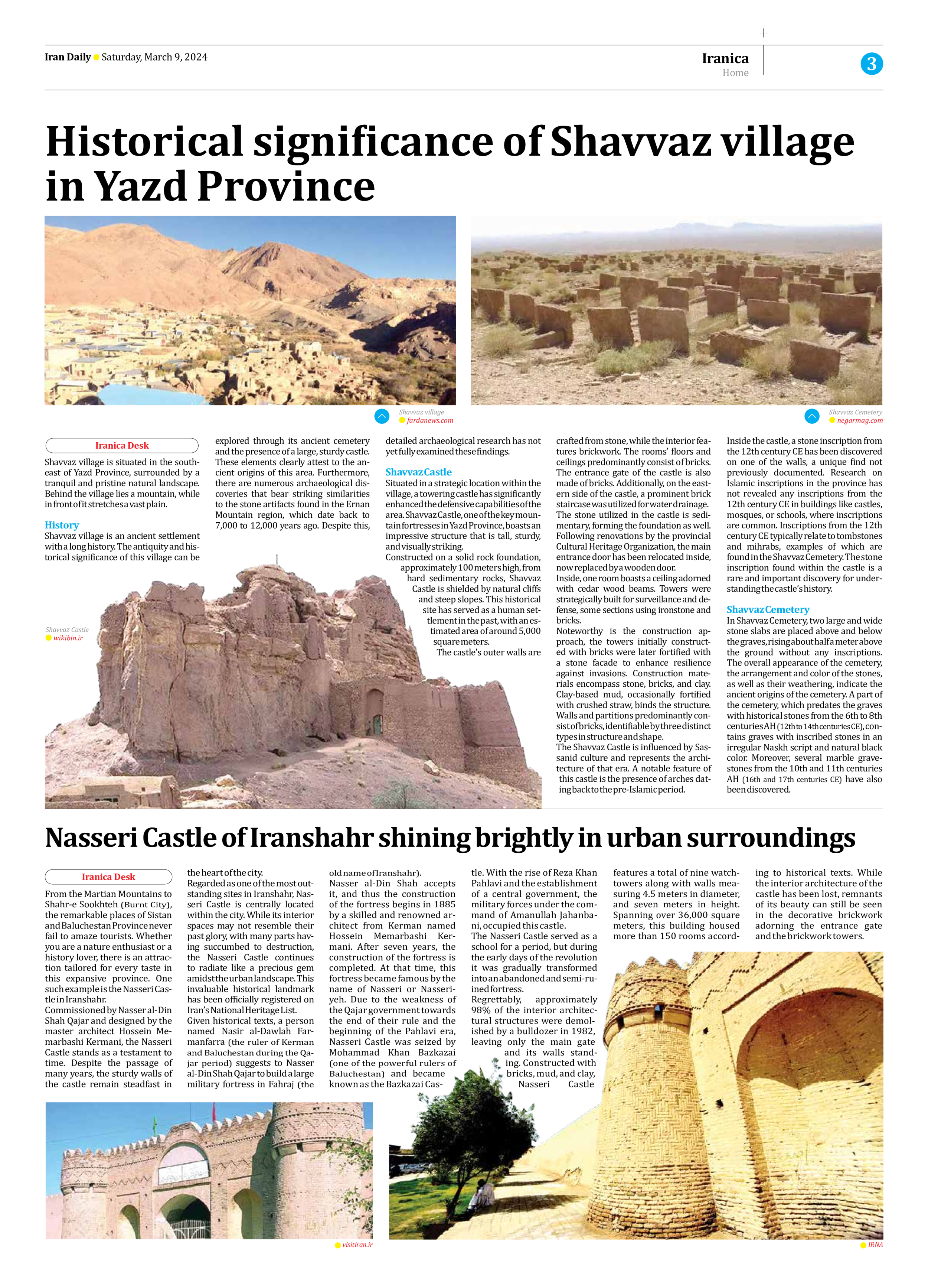
Nasseri Castle of Iranshahr shining brightly in urban surroundings
From the Martian Mountains to Shahr-e Sookhteh (Burnt City), the remarkable places of Sistan and Baluchestan Province never fail to amaze tourists. Whether you are a nature enthusiast or a history lover, there is an attraction tailored for every taste in this expansive province. One such example is the Nasseri Castle in Iranshahr.
Commissioned by Nasser al-Din Shah Qajar and designed by the master architect Hossein Memarbashi Kermani, the Nasseri Castle stands as a testament to time. Despite the passage of many years, the sturdy walls of the castle remain steadfast in the heart of the city.
Regarded as one of the most outstanding sites in Iranshahr, Nasseri Castle is centrally located within the city. While its interior spaces may not resemble their past glory, with many parts having succumbed to destruction, the Nasseri Castle continues to radiate like a precious gem amidst the urban landscape. This invaluable historical landmark has been officially registered on Iran’s National Heritage List.
Given historical texts, a person named Nasir al-Dawlah Farmanfarra (the ruler of Kerman and Baluchestan during the Qajar period) suggests to Nasser al-Din Shah Qajar to build a large military fortress in Fahraj (the old name of Iranshahr).
Nasser al-Din Shah accepts it, and thus the construction of the fortress begins in 1885 by a skilled and renowned architect from Kerman named Hossein Memarbashi Kermani. After seven years, the construction of the fortress is completed. At that time, this fortress became famous by the name of Nasseri or Nasseriyeh. Due to the weakness of the Qajar government towards the end of their rule and the beginning of the Pahlavi era, Nasseri Castle was seized by Mohammad Khan Bazkazai (one of the powerful rulers of Baluchestan) and became known as the Bazkazai Castle. With the rise of Reza Khan Pahlavi and the establishment of a central government, the military forces under the command of Amanullah Jahanbani, occupied this castle.
The Nasseri Castle served as a school for a period, but during the early days of the revolution it was gradually transformed into an abandoned and semi-ruined fortress.
Regrettably, approximately 98% of the interior architectural structures were demolished by a bulldozer in 1982, leaving only the main gate and its walls standing. Constructed with bricks, mud, and clay, Nasseri Castle features a total of nine watchtowers along with walls measuring 4.5 meters in diameter, and seven meters in height. Spanning over 36,000 square meters, this building housed more than 150 rooms according to historical texts. While the interior architecture of the castle has been lost, remnants of its beauty can still be seen in the decorative brickwork adorning the entrance gate and the brickwork towers.







